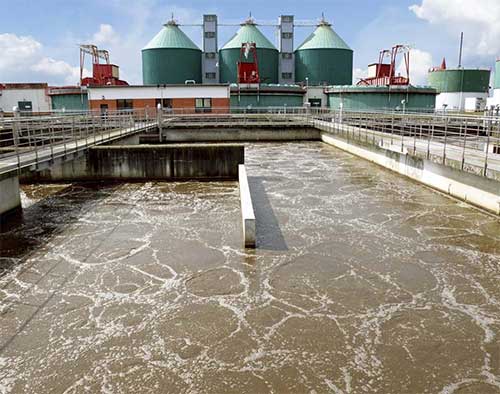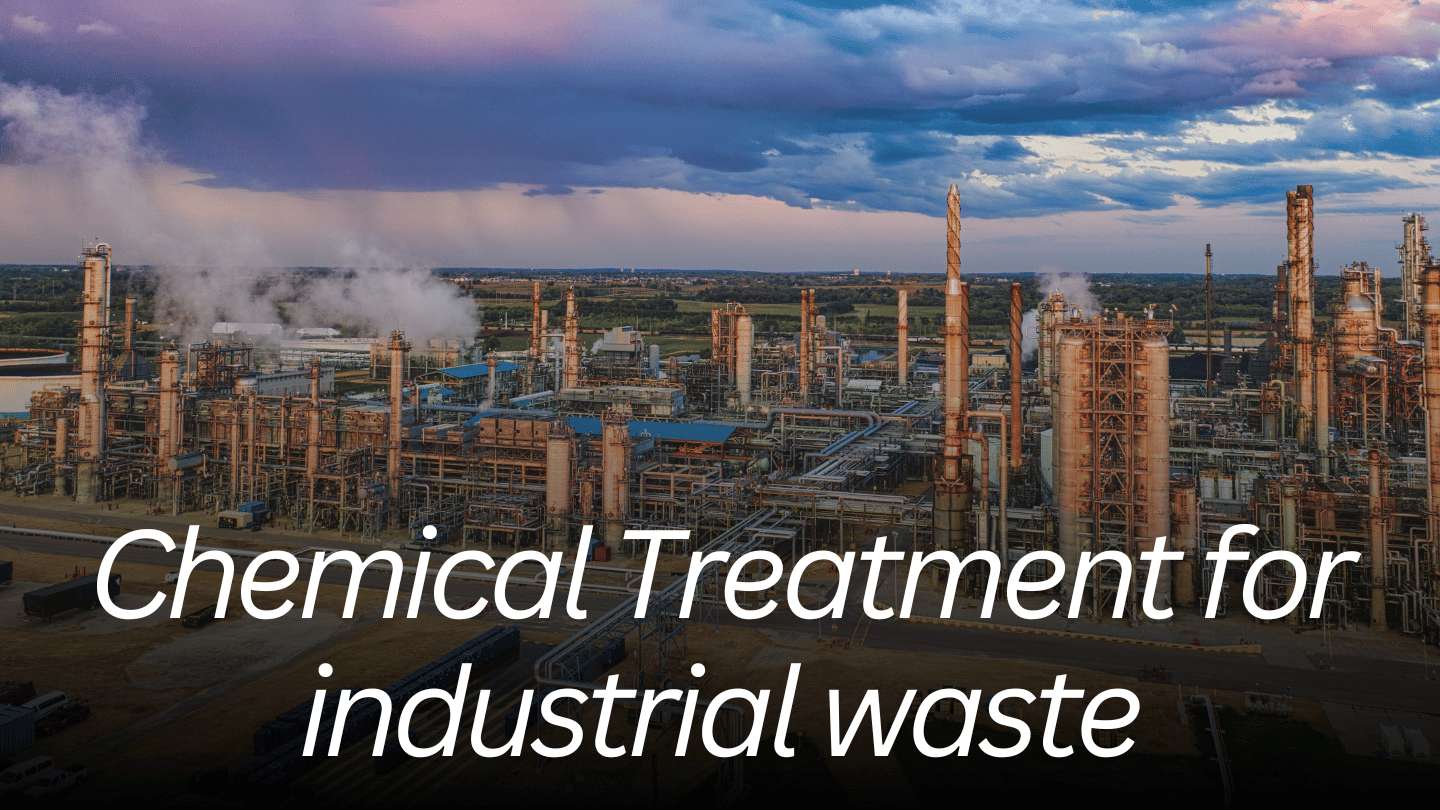Industrial Waste Water Treatment-- Advanced Solutions for Cleaner Effluents
Industrial Waste Water Treatment-- Advanced Solutions for Cleaner Effluents
Blog Article
Innovations and Breakthroughs in Hazardous Waste Water Treatment Technologies
The landscape of commercial wastewater treatment is undertaking a transformative change, driven by innovations that boost both effectiveness and sustainability. Arising innovations, such as membrane bioreactors and microbial fuel cells, are redefining contaminant elimination processes while adding to energy generation. Resource recuperation methods are getting traction, lining up with round economy concepts. As regulatory requirements advance, the combination of AI and equipment knowing right into wastewater monitoring systems guarantees to simplify operations and guarantee conformity. The full ramifications of these innovations elevate crucial concerns regarding their scalability and lasting influence on industry practices.
Introduction of Drainage Treatment Technologies
Wastewater treatment innovations encompass a series of methods designed to remove impurities from commercial effluents prior to their release into the setting. These modern technologies are essential for keeping eco-friendly equilibrium and guaranteeing compliance with environmental laws. The key classifications of wastewater treatment include physical, chemical, and biological approaches, each serving distinct objectives based upon the nature of the pollutants present.

Organic treatment techniques utilize microbes to deteriorate natural issue, making them particularly effective for organic-rich effluents. Methods like turned on sludge and biofilm activators harness the natural deterioration capabilities of microorganisms, leading to significant reductions in biochemical oxygen need (FIGURE)
Advanced Purification Techniques
Advanced filtration techniques represent an important advancement in the realm of industrial wastewater treatment, enhancing the efficiency of pollutant removal processes. Industrial Waste Water Treatment. These techniques include a series of modern technologies, consisting of microfiltration, ultrafiltration, nanofiltration, and turn around osmosis, which give consecutive obstacles for numerous fragment dimensions and chemical frameworks
Microfiltration and ultrafiltration use membrane systems to eliminate suspended solids, bacteria, and larger organic particles, boosting the top quality of effluent previous to more therapy. Nanofiltration connects the space between ultrafiltration and reverse osmosis, effectively getting rid of natural compounds and divalent ions, thus decreasing the load on downstream procedures.
Reverse osmosis supplies the highest degree of purification by allowing just water and little molecules to pass through its semi-permeable membranes, making it excellent for redeeming top notch water from commercial effluents. Recent advancements in membrane layer innovation, including the growth of even more fouling-resistant and durable products, have significantly boosted functional efficiency and lowered expenses.
Incorporating these innovative filtering techniques not just enhances the total treatment procedure however also adds to sustainability efforts by making it possible for water reuse and resource recuperation in industrial setups. (Industrial Waste Water Treatment)
Biological Therapy Developments

In addition, the advancement of engineered organic systems, such as membrane layer bioreactors (MBRs), incorporates biological treatment with sophisticated membrane layer filtration. This combination permits higher effluent high quality and reduced impact, making it appropriate for space-constrained industrial centers. Developments in genetically engineered bacteria have additionally emerged, enhancing the biodegradation of certain contaminants, such as drugs and heavy steels, that are typically testing to eliminate.
Additionally, the application of bioaugmentation strategies, where valuable microorganisms are presented to improve the existing organic treatment procedures, has shown encouraging results in boosting treatment efficiency. These innovations jointly indicate a pattern in the direction of more sustainable and reliable organic treatment approaches that can adjust to the developing intricacies of commercial wastewater streams. As industries proceed to view website focus on environmental compliance, these organic innovations will play an important role in wastewater management.

Resource Recovery Approaches
In industrial settings, the assimilation of resource recovery approaches has become significantly important for enhancing sustainability and decreasing waste. These techniques concentrate on removing important products and energy from wastewater streams, thereby changing potential toxins into multiple-use resources.
One noticeable method is nutrient healing, where nitrogen and phosphorus, frequently existing in excess in wastewater, are caught and exchanged plant foods. This not only lowers environmental influences but likewise provides a circular economic situation service for farming applications. Additionally, innovations such as anaerobic food digestion permit the conversion of natural waste into biogas, a renewable resource source that can balance out nonrenewable fuel source use in industrial procedures.
Furthermore, advanced filtering and membrane layer technologies assist in the recuperation of industrial spin-offs such as salts and steels. These recovered materials can be rehabilitated right into manufacturing processes, decreasing the requirement for virgin sources.
Future Fads in Waste Water Administration
As markets significantly focus on sustainability, the future of wastewater management is readied to go through considerable makeovers. Technical advancements, such as expert system and artificial intelligence, will certainly make it possible for more efficient monitoring and management of wastewater systems. These innovations can anticipate maintenance requirements, enhance treatment processes, and improve decision-making, eventually decreasing operational expenses and environmental impact.
Furthermore, the integration of circular economy principles will certainly play a critical duty in wastewater monitoring. Industries are anticipated to move towards systems that not only treat wastewater yet additionally recoup useful resources, such as nutrients, water, and energy. This transition will certainly Go Here lessen waste and promote the reuse of materials, aligning with international sustainability objectives.
Emerging treatment strategies, such as membrane layer bioreactors and advanced oxidation processes, will certainly additionally improve the effectiveness of wastewater therapy, enabling for better effluents appropriate for reuse. Additionally, regulative frameworks are likely to advance, emphasizing stricter standards for wastewater discharge and encouraging sectors to embrace innovative therapy options.
Conclusion
In web conclusion, the advancement of industrial wastewater therapy innovations demonstrates a substantial shift in the direction of improved performance and sustainability. Advancements in advanced purification methods, organic treatments, and source recovery approaches highlight the industry's dedication to environmental stewardship. The assimilation of expert system and device understanding even more maximizes these processes, making certain regulatory conformity and promoting a circular economic situation. Continued improvements in these locations will play a critical role fit the future of wastewater management and safeguarding essential water resources.
The landscape of industrial wastewater treatment is going through a transformative change, driven by technologies that boost both efficiency and sustainability.Wastewater treatment innovations include a variety of approaches made to get rid of contaminants from industrial effluents before their release into the environment.Harnessing the power of biological processes has led to significant developments in the treatment of industrial wastewater.Additionally, the implementation of bioaugmentation techniques, where useful microorganisms are introduced to enhance the existing biological treatment procedures, has actually revealed appealing outcomes in enhancing treatment performance. These innovations jointly indicate a fad in the direction of more sustainable and efficient organic treatment approaches that can adapt to the advancing intricacies of commercial wastewater streams.
Report this page